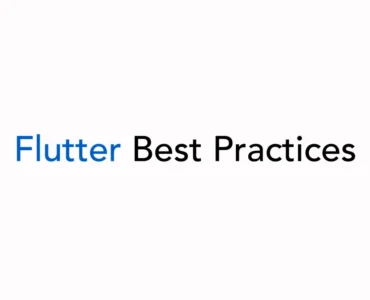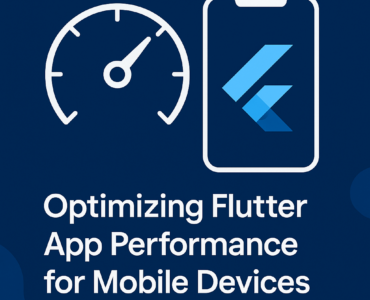State management is a crucial aspect of any Flutter application. Riverpod is a modern, robust, and versatile state management solution for Flutter that overcomes the limitations of traditional approaches like Provider. In this guide, we will explore the fundamentals of Riverpod and how to use it effectively in your projects.
Why Choose Riverpod?
- Improved Readability: Clear separation of state logic and UI.
- Compile-time Safety: Detect errors during compile-time rather than runtime.
- Scoped Dependency Injection: Easily manage dependencies across widgets.
- AutoDispose Feature: Automatically clean up resources to prevent memory leaks.
- No Context Required: Access state without relying on BuildContext.
Setting Up Riverpod
Step 1: Add Dependency
Add the Riverpod package to your pubspec.yaml file:
dependencies:
flutter_riverpod: latest_versionRun the following command to fetch the package:
flutter pub getStep 2: Wrap Your App
Wrap your app with the ProviderScope widget to enable Riverpod:
import 'package:flutter/material.dart';
import 'package:flutter_riverpod/flutter_riverpod.dart';
void main() {
runApp(const ProviderScope(child: MyApp()));
}
class MyApp extends StatelessWidget {
const MyApp({super.key});
@override
Widget build(BuildContext context) {
return MaterialApp(
home: HomeScreen(),
);
}
}Core Concepts of Riverpod
1. Providers
Providers are the building blocks of Riverpod. They expose state and manage its lifecycle.
- Provider: For exposing immutable data.
- StateProvider: For simple, mutable state.
- FutureProvider: For asynchronous operations.
- StreamProvider: For working with streams.
- StateNotifierProvider: For complex business logic.
Example: Counter App with StateProvider
Let’s create a simple counter app using Riverpod’s StateProvider.
Step 1: Define the Provider
import 'package:flutter_riverpod/flutter_riverpod.dart';
final counterProvider = StateProvider<int>((ref) => 0);Step 2: Use the Provider in Your Widget
import 'package:flutter/material.dart';
import 'package:flutter_riverpod/flutter_riverpod.dart';
class HomeScreen extends ConsumerWidget {
@override
Widget build(BuildContext context, WidgetRef ref) {
// Access the state using ref.read or ref.watch
final counter = ref.watch(counterProvider);
return Scaffold(
appBar: AppBar(title: Text('Riverpod Counter')),
body: Center(
child: Text(
'Counter Value: $counter',
style: TextStyle(fontSize: 24),
),
),
floatingActionButton: FloatingActionButton(
onPressed: () {
ref.read(counterProvider.notifier).state++;
},
child: Icon(Icons.add),
),
);
}
}Output:
Insert an image here showing a counter app with a button to increment the counter.
Example: Todo App with StateNotifierProvider
For more complex state management, use StateNotifierProvider.
Step 1: Define the StateNotifier
import 'package:flutter_riverpod/flutter_riverpod.dart';
class Todo {
final String title;
final bool completed;
Todo({required this.title, this.completed = false});
}
class TodoNotifier extends StateNotifier<List<Todo>> {
TodoNotifier() : super([]);
void addTodo(String title) {
state = [...state, Todo(title: title)];
}
void toggleTodoStatus(int index) {
state = [
for (int i = 0; i < state.length; i++)
if (i == index)
Todo(title: state[i].title, completed: !state[i].completed)
else
state[i]
];
}
}
final todoProvider = StateNotifierProvider<TodoNotifier, List<Todo>>((ref) {
return TodoNotifier();
});Step 2: Create the UI
import 'package:flutter/material.dart';
import 'package:flutter_riverpod/flutter_riverpod.dart';
class TodoApp extends ConsumerWidget {
@override
Widget build(BuildContext context, WidgetRef ref) {
final todos = ref.watch(todoProvider);
return Scaffold(
appBar: AppBar(title: Text('Todo App')),
body: ListView.builder(
itemCount: todos.length,
itemBuilder: (context, index) {
final todo = todos[index];
return ListTile(
title: Text(
todo.title,
style: TextStyle(
decoration:
todo.completed ? TextDecoration.lineThrough : null,
),
),
trailing: Checkbox(
value: todo.completed,
onChanged: (value) {
ref.read(todoProvider.notifier).toggleTodoStatus(index);
},
),
);
},
),
floatingActionButton: FloatingActionButton(
onPressed: () {
ref.read(todoProvider.notifier).addTodo('New Todo');
},
child: Icon(Icons.add),
),
);
}
}Output:
Insert an image here showing a Todo app with tasks and a button to add tasks.
Best Practices
- Use
ConsumerWidgetfor widgets that depend on state. - Use
ref.watchfor reactive state updates andref.readfor one-time access. - Dispose of resources with
AutoDisposewhen the state is no longer needed. - Keep business logic out of the UI by using
StateNotifieror other similar classes.
Conclusion
Riverpod is a powerful state management library that simplifies managing app state in Flutter. Its compile-time safety, ease of testing, and separation of concerns make it an excellent choice for modern Flutter applications. Experiment with different providers to see what works best for your project.



